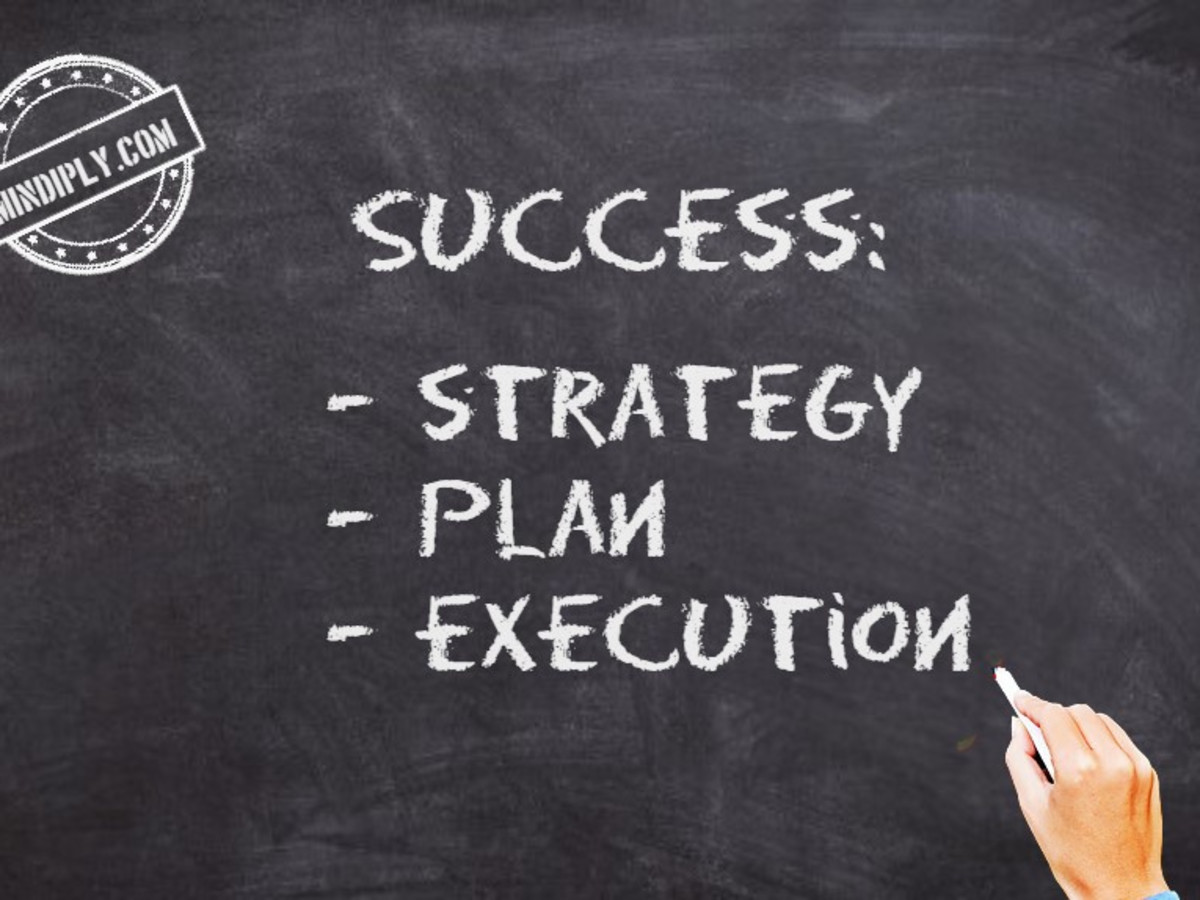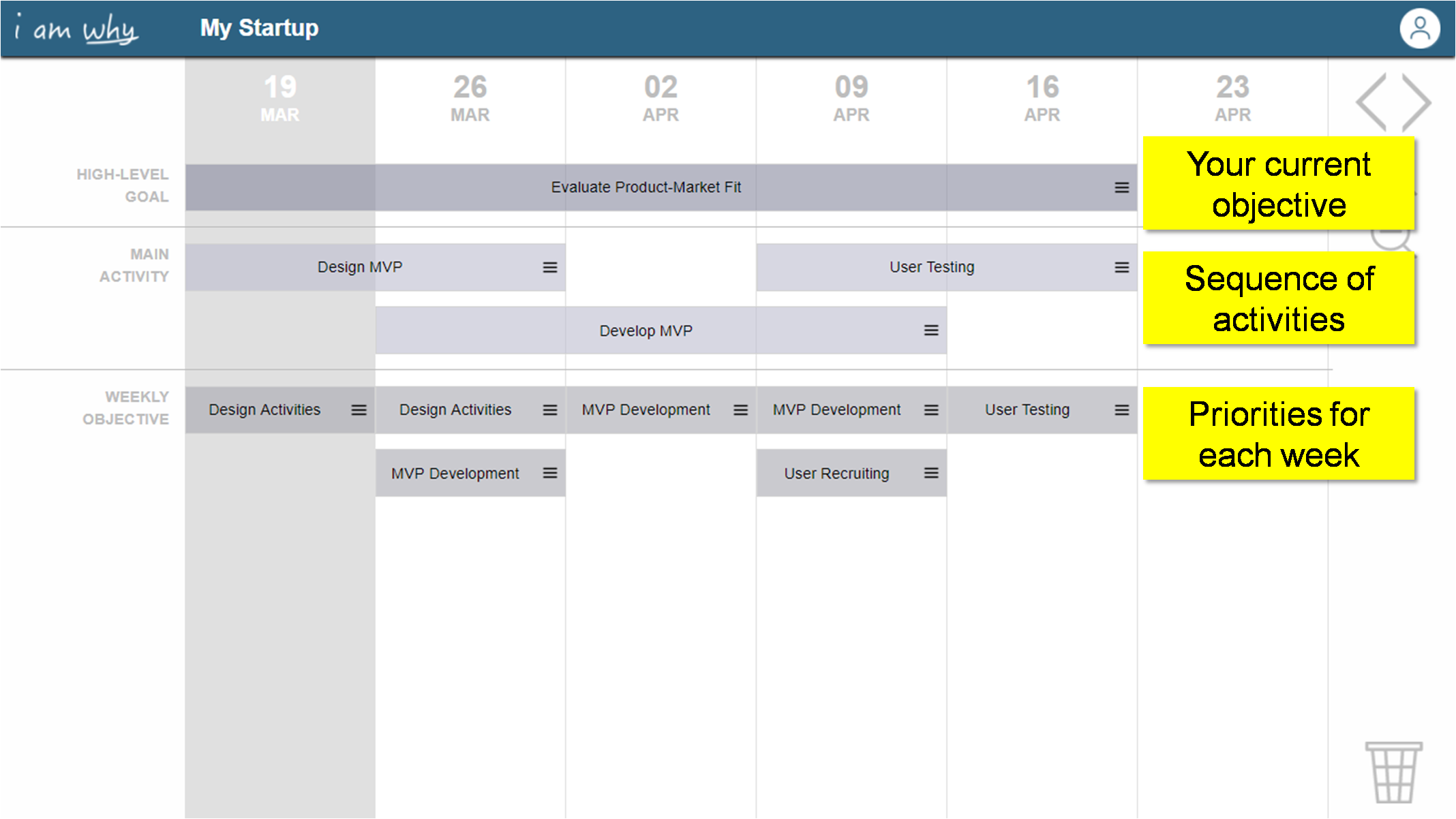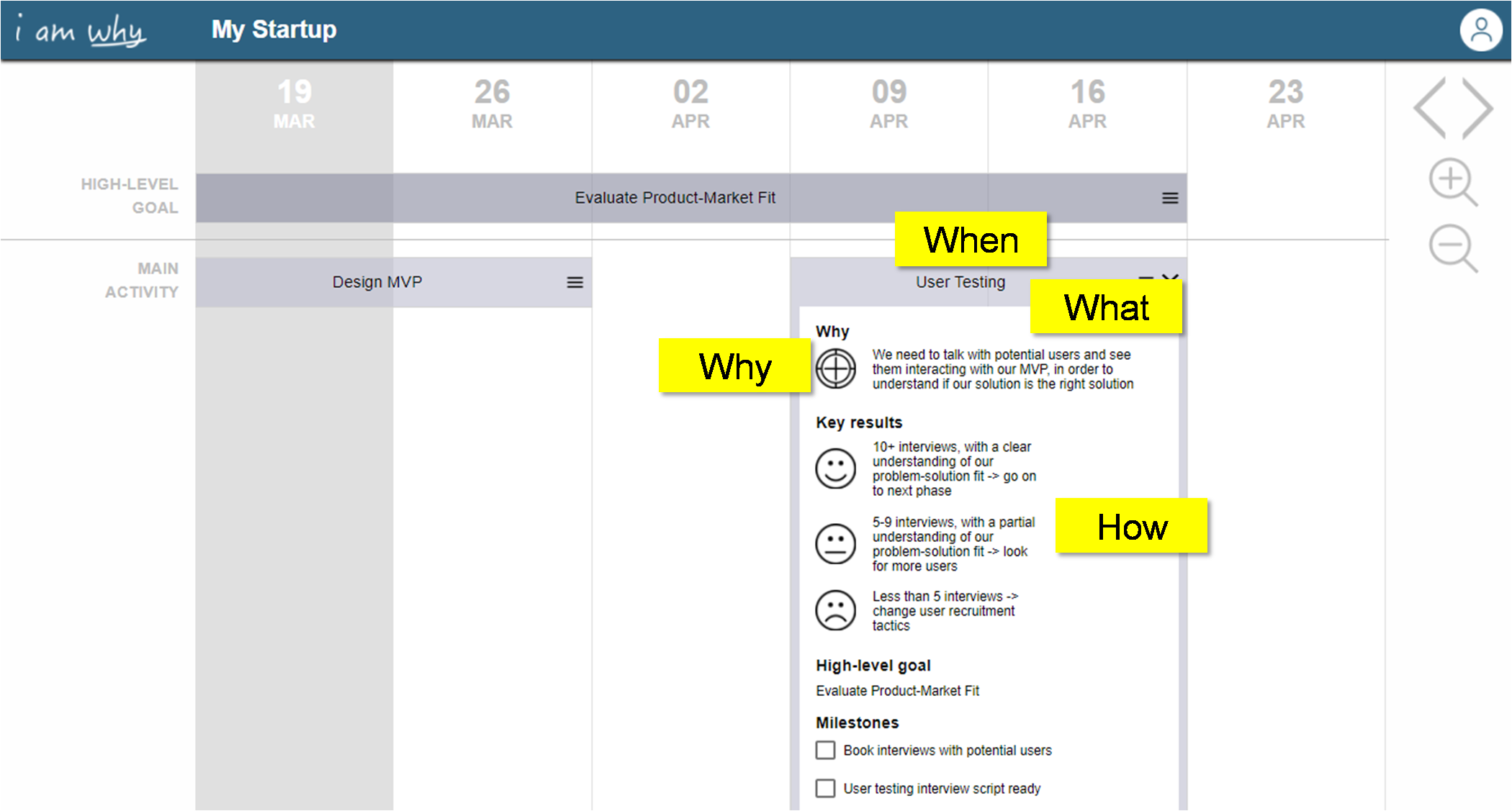
Strategy and Strategic Planning for Startups - Part 2
Francesco Marcatto23 Mar 18
Strategy and execution
“A great strategy without execution is one of those ‘tree falls in the forest’ moments, and great execution without strategy is just a bunch of people running around thinking they’re doing great when nothing is tied to a long-term goal”. Ted Bauer
Often our nice strategy just stays on paper. We make long meetings deliberating what the next big objectives should be, going back to the same day-to-day activities the day after. This leads to a paradoxical result: we are always busy, but we are not moving our business forward.
This misalignment problem could be devastating for startups: we all know that the probability of creating a successful business out of nowhere is low, but the probability of having success not even doing the right steps is essentially zero.
So, is there some sort of solution to this problem? Our suggestion is to always add a layer between the strategy and execution levels. It's called strategic planning, and it’s every strategy’s best friend.
Strategic planning: Align your activities to your strategy
Strategic Planning is about linking your team’s day-to-day actions to your overall strategy. It’s about defining clear priorities that guide how you plan your activities - so that the activities are aligned with your strategy. It’s about ensuring that your team is always working on what’s really important to move your business forward.
Why do you need Strategic Planning
Some authors, such as Rumelt, say that planning is already included in the development of a strategy. That’s totally fine, strategy should not be confounded with blue sky thinking, and it is intrinsically action-oriented.
The reason why we find it more useful to consider Strategic Planning a separate phase is because it is often overlooked, if not totally forgotten. Indeed, we usually underestimate the intention-action gap. We decide that we should begin exercising, but then we never sign up to the gym. We say ‘no more junk food', and the next day we are having lunch at the usual fast food. We make big decisions during meetings, but then we go back to usual day-to-day routine.
If this sounds common, it’s because it happens every time, to almost every human in the world.
Moreover, we have tools and frameworks to help us in the strategic choices, and task management software for keeping track of our daily activities, but very few tools specifically developed for strategic planning.
The best way for closing the intention-action gap, says research, is to form implementation intentions. That is, we have to create explicit plans that spell out what we will do in order to pursue our goal and stay on track.
How to create a Strategic Plan
During the strategic thinking phase, you should have decided where you want your business to go, and identified the potential obstacles and your strength points. Now it's time to plan how to actually go there.
The core of strategic planning is breaking down your big objective into a sequence of activities that will narrow the gap from your current situation to the desired outcome. Most of the times identifying the right set of actions is easy.
For example, if you are following the Lean Startup method and are in the product/market fit stage, your big objective now is to test if your product will be appreciated by your potential customers. So your sequence of activities would be as follows:
- Design MVP
- Develop MVP
- Test MVP with users
- Adjust MVP following users’ feedback (iterate steps 2 and 3)
Other times finding the right sequence won't be so easy. If you encounter some difficulties, try working backwards from the desired state to the current one, it's surprisingly effective for finding ways to overcome some hard obstacles.

The Five questions for a successful strategic plan
Creating a sequence of activities is the first essential step, but is not enough if you aim at having a very successful plan, a plan which will bring together and guide your team in working towards a common goal. What we strongly recommend, is to try to answer all the following five questions for each activity: What, Why, When, Who, and How.
What
Of course, you have to start by telling what this activity is about. Give it a name and add a short description. Remember that it should all be clear for your teammates too, so jargon and contractions are best avoided. If the activity is a complex one, it could be worth breaking it down into smaller sub-activities. If your activities start looking as to-dos you have probably gone too far, and you risk slipping into micromanaging your team. That’s probably best avoided - micro-management is demeaning and inefficient. People thrive when they can decide how to accomplish something once they know what needs to be done.
Why
Don't underestimate the power of why. Knowing why an activity is planned helps others to understand what it is. It also becomes more useful as times passes, when you'll find yourself asking ‘Hey, why are we doing all of this stuff?' Finally, it's useful for empowering your teammates: if they know why they have to do something, they'll be free to improvise and take initiative to reach the desired goal even when the unexpected occurs.
When
Add some time boundaries. A starting time (when this activity will begin) and a deadline are usually enough. We know that we are not always very accurate in time forecasting, but try it anyway: people work better and harder when they have a deadline (but be careful: unrealistically strict deadlines will kill motivation and cause very high levels of stress!).
Who
Unless you are a one-man-army, you’ll have to assign activities to others. So, it should always be crystal clear who should carry on the activities. In smaller teams you’ll assign them directly to individuals, in bigger organisations to units or departments.
How (to measure success)
This is a tricky one: You should define before starting the activity what you want to achieve, and express it with metrics. What would real ‘success’ look like? What would be merely ‘okay’? What should be considered a failure? This will help you focus, track your progress and identify in a timely fashion if your current plan is working or if you need to make changes to your strategy.

A plan is a plan is a plan (but only if you write it down)
The strategic plan you create is useful only if you write it down, share with your team, and look at it periodically.
You can’t expect your team members to be aligned towards the same objective if you don’t show them the big picture and the small pieces that make it up. A text document or a spreadsheet could work, but we strongly advise you to use a more visual approach, so that your plan is much easier to understand (almost nobody likes walls of text and endless tables). Whiteboards or sticky notes, for example, are great if you work together with your team, otherwise you could try some specific software for visual planning.
And, for maximum efficacy, try to form a new habit: each Monday do a quick meeting in which you bring out the strategic plan, track past week's activities, refresh the plan and decide what's important to do during this week. Just a few minutes will be enough to set priorities and guide your team towards doing the things that will move the needle.
What’s your experience with strategic planning? Do you have other suggestions for closing the strategy - execution gap? Let us know at hello@mindiply.com or via our social media channels!







